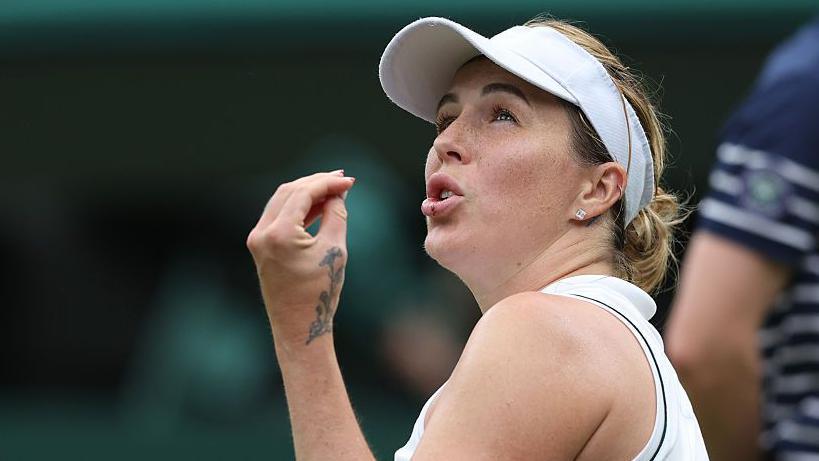Why Don’t We Trust Technology in Sport? A Wimbledon Case Study
The intersection of technology and sports has always been a dynamic and often contentious space. Wimbledon, the pinnacle of tennis, recently provided a vivid illustration of this delicate balance when an incident on Centre Court highlighted the growing skepticism surrounding the integration of advanced technology, particularly Artificial Intelligence (AI), into athletic competitions. While the promise of enhanced accuracy and fairness is undeniable, a recent event involving an electronic line-calling system and a human error has reignited discussions about trust, human oversight, and the very essence of sport.
The incident, which occurred during a match involving Britain’s Sonay Kartal and Anastasia Pavlyuchenkova, saw the electronic line-calling (ELC) system fail to register a shot as out. Despite clear visual and replays confirming the ball was indeed out, the system remained silent. This led to a controversial replayed point, which Pavlyuchenkova subsequently lost, a moment she described as the game being “stolen” from her. The situation was further complicated by the revelation that the system had been accidentally switched off by a human operator – a seemingly mundane, yet profoundly impactful, oversight.
This event has fueled a debate among players and fans alike, with some questioning the place of such technology in a sport steeped in tradition. The reliance on ELC, fully implemented at Wimbledon this year following earlier trials, replaces human line judges entirely. While proponents argue for its superior accuracy, critics point to such breakdowns as evidence that technology, even when powered by AI, is not infallible and can lead to outcomes that feel unfair or even biased, as Pavlyuchenkova speculated about Kartal’s nationality.
The Accuracy vs. Trust Dilemma
The accuracy of technology like Hawk-Eye, the firm behind Wimbledon’s ELC system, is indeed remarkable. Utilizing multiple cameras and AI to track ball movements and player foot positioning, it offers a level of precision that human eyes simply cannot match. Former Wimbledon champion Pat Cash champions this technology, stating, “The electronic line-calling is definitely better than the human eye… Computer errors will come at times, but generally speaking, the players are happy with it.” He acknowledges that while errors occur, the system’s overall accuracy surpasses that of human umpires.
Historically, technological advancements have often been met with resistance before becoming accepted norms. From the introduction of the shot clock in tennis to VAR in football, sports have consistently evolved to incorporate technology aimed at improving fairness and reducing controversy. However, as Professor Gina Neff from Cambridge University points out, the issue often lies not just in accuracy but in perceived fairness and context. “Right now, in many areas where AI is touching our lives, we feel like humans understand the context much better than the machine,” she observes. AI operates on programmed rules, whereas humans can factor in broader context and nuances, leading to decisions that might feel more equitable, even if not strictly by the book.
The Human Element in AI
Professor Neff emphasizes that the debate shouldn’t be framed as “humans versus machines,” but rather as the crucial “intersection between people and systems.” This concept of “responsible AI” hinges on human oversight – ensuring that AI systems are monitored and that their deployment is both fair and safe. However, the Wimbledon incident, and indeed the ongoing controversies surrounding VAR in football, demonstrate the challenges in achieving this seamless integration. VAR’s own struggles with “significant human error,” as seen in past football matches, highlight that human involvement, even in overseeing automated systems, remains a critical vulnerability.
The broader societal unease with rapidly advancing technology, as noted by entrepreneur Azeem Azhar, stems from a perceived lack of agency and control. As technology reshapes our world at an unprecedented pace, our existing beliefs and systems can become outdated, creating a sense of disorientation. This unease extends beyond sport, impacting areas like healthcare, where patients often prefer human diagnoses for serious conditions like cancer, even when AI offers superior accuracy. Similarly, despite statistical evidence showing autonomous vehicles to be safer than human drivers, public trust remains a significant hurdle.
Perfection and the Spectacle of Sport
The pursuit of technological perfection in sport raises a fundamental question: does it enhance or detract from the spectacle? Sports journalist Bill Elliott suggests that striving for absolute perfection might inadvertently lead to a less engaging experience. “You can make an argument that perfection is better than imperfection but if life was perfect we’d all be bored to death,” he remarks. The unpredictable human element, the fallibility that allows for moments of controversy, drama, and ultimate triumph over adversity, is often what makes sports so captivating. When technology errs, or even when it functions flawlessly but removes the human judgment call, it can feel like a step into a sterile, predictable future.
The Wimbledon incident serves as a potent reminder that while technology offers undeniable benefits in sports, building and maintaining trust requires a nuanced approach. It necessitates not only technological reliability but also transparency, clear communication, and a continued recognition of the irreplaceable value of human judgment and context. As sports continue to navigate this technological frontier, striking the right balance between precision and the human element will be key to ensuring that the games we love remain both fair and fundamentally human.

